Text
10 Facts Psychology has helped us realize
-Play really helps a child's brain, preparing a child for the adult world and explore the unknown! (Boston Museum)

-Announcing goals to other people motivates you less to complete them (Factslides)

-The illusion of progress is illuminating; so, for instance, getting a stamp on a cup of coffee motivates you to buy more (Business Insider)

-Researchers are considering internet addiction to the list of mental disorders (Factslides)

-The average strong ties one can hold is up to 150 people or so (Business Insider)

-Delaying gratification is hard, but we're more likely to succeed. Those whom were able to delay gratification were less likely to be obese (Huffington Post)

-The brain treats rejection like physical pain (Factslides)

-People will go to great lengths to follow authority (see the Milgram experiment) (psychalogyabout)
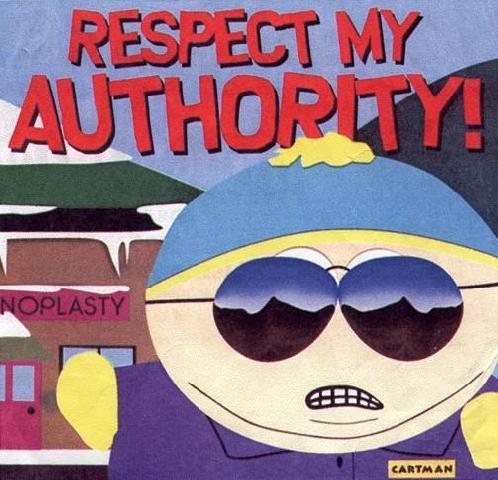
-There is a gene that can cause you to be negative most of the time (Factslides)
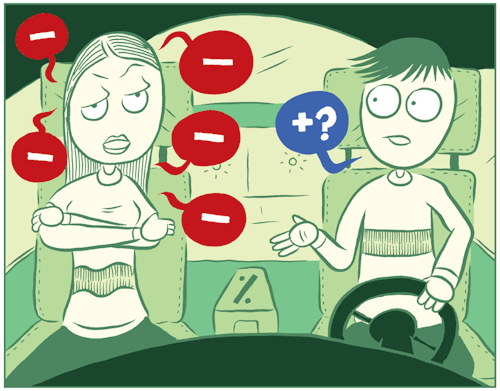
-Video games can reduce the symptoms of depression and anxiety (medhelp)

Works Cited:
A. Fact sources
http://www.huffingtonpost.com/2013/10/18/20-psychological-studies-_n_4098779.html
http://www.factslides.com/s-Psychology#
http://www.businessinsider.com/48-psychological-facts-you-should-know-about-yourself-2012-4?op=1
http://psychology.about.com/od/socialpsychology/qt/facts-about-social-psychology.htm
http://www.medhelp.org/child-health/articles/Are-Video-Games-Good-for-Your-Health/158
http://www.bostonchildrensmuseum.org/power-of-play
B. Pictures
http://thumbs.media.smithsonianmag.com//filer/Phenom-Childred-Play-631.jpg__800x600_q85_crop.jpg
http://strongholdfitness.com.au/wp-content/uploads/2012/05/goal-setting-4.jpg
http://www.ciboespresso.com.au/images/sized/galleria/images/uploads/Stamp_Card-580x354.jpg
http://info.pacificquest.org/Portals/166867/images/Internet_Addiction_Treatment.jpg
http://www0.artflakes.com/artwork/products/738884/poster/ff090110103-800.jpg
http://www.sott.net/image/s5/117376/full/marshmallow_girl.jpg
http://latoyanewman.com/home/media/k2/items/cache/c99e3db826c0f4cc2688a36ce3b60e1a_XL.jpg
https://prchecker-innovalist.netdna-ssl.com/wp-content/uploads/2013/06/website-authority-image.jpg
http://taracreel.com/wp-content/uploads/2013/01/Negative-nancy.gif
http://greygamers.org/wp-content/uploads/2013/08/health-benefits-of-video-games-for-seniors.gif
6 notes
·
View notes
Text
10 Interesting Facts about the Brain
-It uses up 25% of the oxygen you breathe (softschools)

-Holding a pen/pencil in your teeth, which forces you to smile, are more likely to become happy (Kalat 358).

- Potassium, calcium, and fatty acids like omega 3s are some of the nutrients needed to help your brain function (softschools)

-Phantom limb sensations are more likely to be lost if amputees use an artificial arm or leg (Kalat 147).

-Your brain itself feels no pain (brainfitnessforlife)
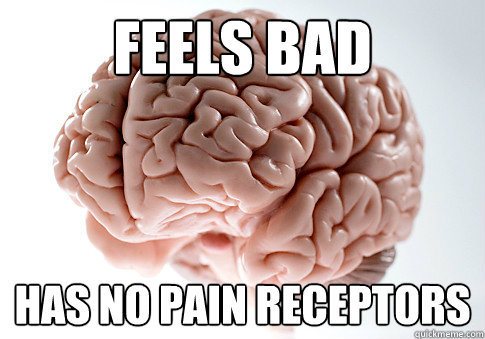
-The General population has a one percent chance of getting schizophrenia, but those odds get higher if a relative has the condition (if one identical twin has schizophrenia, the odds of the other twin having the same condition is 48%!) (Katel 475)

-The brain floats in cerebral spinal fluid, helping protect it from harm and provides nutrients to some cells in the brain

-Your brain is about 80% water (brainfitnessforlife)

-The right side of your body is controlled by your left hemisphere while the left side of your body is controlled by your right (schoolsofts)
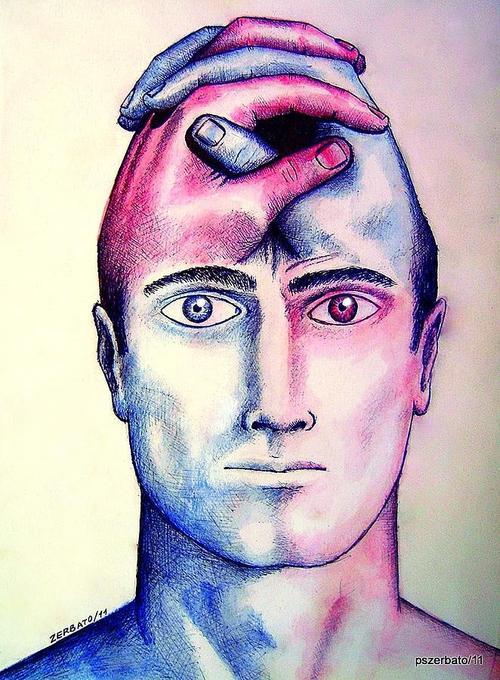
-Yawning keeps your brain cool, with some scientists saying that it's an evolutionary way to oxygenate your blood (brainfitnessforlife)

Works cited:
Kalat, James W. Biological Psychology. Pacific Grove, CA: Brooks/Cole Pub., 2013. Print.
Schoolsofts: http://www.softschools.com/facts/human_body/human_brain_facts/51/
brainfitnessforlife: http://www.brainfitnessforlife.com/8-unusual-facts-about-your-brain/
Oxygen picture: http://didyouknewthat.files.wordpress.com/2012/01/brain1-300x226.jpg
Pen Picture: http://write-plus.com/images/5211198.jpg
Food picture: http://www.instah.com/wp-content/uploads/2013/04/brain-foods-sm.jpg
Amputation picture: http://www.socalpain.com/wp-content/uploads/2014/01/AmputationProsthesis.jpg
No pain receptors: http://www.socalpain.com/wp-content/uploads/2014/01/AmputationProsthesis.jpg
Schizophrenia Image: http://static.psychguides.com/wp-content/uploads/schizophrenia2-215x300.jpg
Cerebral Spinal Fluid: http://www.choa.org/image/ial/images/2098/2098_image.gif
Water brain image: http://www.thewaterdeliverycompany.com/new/wp-content/uploads/2014/03/01WholeBrain.jpg
Contra-lateral: http://images.fineartamerica.com/images-medium-large/contralateral-stimuli-paulo-zerbato.jpg
Charlie Brown: https://mrbarlow.files.wordpress.com/2011/12/yawn.jpg
#Fun facts#did you know#fun facts about the brain#brain facts#brain#schizophrenia#happy#cerebrospinal fluid#yawn#images
4 notes
·
View notes
Photo
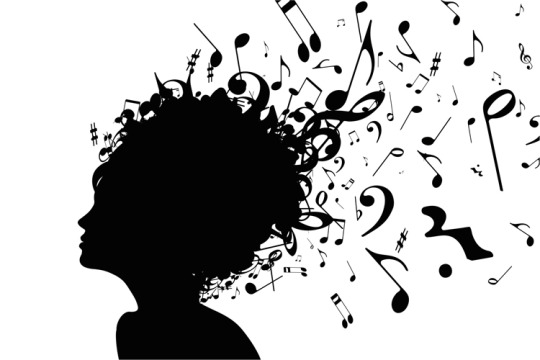
Music is an enigma; it's a bunch of comprised sounds, frequencies, and/or pitches. This definition cannot describe the powerful feelings music has on us; it makes us laugh, makes us cry, and sometimes even make us angry.
Every single human culture has language, which means that every culture also has music; the two are very related (Kalat 441). Broca's area, which is responsible for control of speech, is highly activated when sight-reading music for orchestral instruments (Encyclopedia Britannica; Kalat 441).
Despite this, how do we process music?
Listening to music starts with the subcortical structure, which is composed of the cochlear nuclei, the brain stem, and the cerebellum (Levitin 84). Then it moves up to auditory cortices on both sides of the brain (Levitin 84).
If you're trying to follow up to the music you know, or at least music you know, more of the brain is involved (Levitin 84). The hippocampus (our memory) and subsections of our frontal lobes, become activated (Levitin 84).
Tapping along with music gets your cerebellum active while performing music involves the frontal lobes again for planning along with the motor cortex located in the parietal lobe (Levitin 84).
Reading music involves the visual cortex while listening or recalling lyrics invoke language centers, including Broca and Wernicke's areas (Levitin 84).
Overall, the brain clearly loves music (in most individuals). The video down below agrees with this concept as well (note: if you can't see it, click on the box):
In addition, if you like music reviews on metal music such as "Psychostick" and "Ziltoid the Omniscient" check out my boyfriend's blog here: http://metal-scott.tumblr.com/
Works Cited:
Kalat, James W. Biological Psychology. Pacific Grove, CA: Brooks/Cole Pub., 2013. Print.
Levitin, Daniel J. "Behind the Curtain: Music and the Mind Machine." This Is Your Brain on Music: The Science of a Human Obsession. New York, NY: Dutton, 2006. N. pag. Print.
Broca's are information: http://www.britannica.com/EBchecked/topic/135877/Broca-area
Got my picture from here: http://media.salon.com/2011/12/shutterstock_54190006.jpg
Got the video from here: https://www.youtube.com/watch?v=R0JKCYZ8hng
#Music#muscian#music and brain#music mind workout#mind machine#instruments#singing#playing an instrument#learning an instrument#benefits of music#metal music#psychostick
2 notes
·
View notes
Photo
It's an interesting disorder as well! It's weird how behaviors that appear to be simple are, in truth, extremely complex!
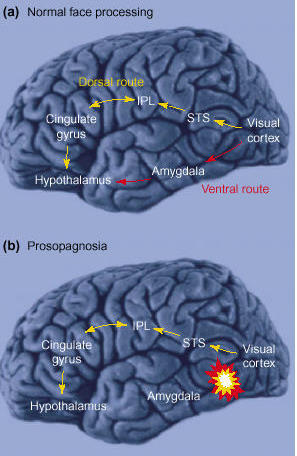
Face blindness – when you can’t recognise a familiar face
Specific areas of the brain process facial information. Damage to those areas gives rise to prosopagnosia or “face blindness”: an inability or difficulty with recognising faces. While brain damage-induced prosopagnosia is rare, prosopagnosia itself is not. Studies suggest around 2% of the population could have some form of prosopagnosia. These “developmental” prosopagnosics seem to be born without the ability to recognise faces and don’t acquire it, relying instead on all manner of cues, from gait to hairstyles, to tell people apart.
Kirsten Dalrymple from the University of Minnesota is one of a handful of researchers looking into developmental prosopagnosia. Her particular interest is in prosopagnosic children. “Some seem to cope without much of a problem but, for others, it’s a totally different story,” she says. “They can become very socially withdrawn and can also be at risk of walking off with strangers.”
The route of facial perception is described through the path of various parts of the brain. The dorsal route is intact, but in people with prosopagnosia, the ventral route is disturbed.
149 notes
·
View notes
Text
Love is in the Air, can't you smell it?

Have you ever thought that a smell was captivating, particularly on someone whom's captured your interest sexually? Or have you ever thought that he/she smells better then ever? The reason could be due to phermones!
Phermones are known for their ability to attract the opposite sex, especially in rodents and insects (Azar 65). Most mammals detect perhmones by using the olfactory system and their vomeronasal oragan (VNO) (Azar 65). Humans appear to have a VNO as well, but it's deeply burried inside the naval cavity and it's unclear whether there are phermones or VNO being involved (Azar 65). BUT THAT DOES NOT MEAN THAT SMELL DOES NOT MAKE A DIFFERENCE! One secretion from the skin of men (which was purified) seemed to affect mood in 40 women whom were given either a this or a placebo (Azar 66). Women exposed to secretion showed a significant decrease in negative affect (Azar 66).
But it's not surprise that smells can affect our mood and behavior. Even scents beyond phermones can, according to F Bryant Furlow whom wrote the article "The Smell of Love" from Psychology Today and some of those scents include:
-A faint trace of lemon significantly increases people's perception of their own health (89)
-Lavender incense contributes to a pleasent mood-but it lowers volunteers' mathematical abilities (89)
-A whiff of lavender and eucalyptus increases people's respiratory rate and alertness (89)
-The scent of phenthyl alcohol (a constituent of rose oil) reduces blood pressure (89)
Humans also have "scent-communicating chemical compounds" such as; "sweat, urine, breath, saliva, breast milk, skin oils, and sexual secretions...) (Furlow 90).
Since we're not likely to smell someone else's urine or breat milk, and unless you're dating or such, it's a bit awkward to get close to smell someone's breath and saliva.
With sweat glands, however, there are three types:
Sabecous, which is most commonly found on the face and forehead but can occur in openings such as eyelids, ears, nostrils, etcetera (Furlow 90).
Sabaceous are sweat glands and are not found as much in healthy individuals (Furlow 90).
Apocrine glands, which is the possible source of human phermones, holds promise in that it may affect interpersonal interactions (Furlow 90). It occurs in high concentrations located on hands, scalp, breast aerolas, and wherever body hair is possessed (formed after puberty) (Furlow 90).

Men produce more of these apocrine glands; the hair on their chest and so forth is where apocrine smells diffuse, thus having men be more smelly; however, women generally have a better sense of smell (Furlow 91-92).
Apocrine sweat glands are known to affect sexual behavior; anderosterone is one that is produced far more in men, but is unpleasant to smell, being the second to last in pleasantness (sulfur compounds put in natural gas is first) (Furlow 91).
Here is also some more information about smell as well! (note: just click on the box to see the video; same as the last post).
Works Cited:
Azar, Beth. "Communicating through Phermones." APA Monitor (1998): 65-67. Print.
Furlow's Article: http://www.psychologytoday.com/articles/200910/the-smell-love (Note: with page numbers, I was using a printed version)
1st picture: http://images.tangomag.com/sites/default/files/imagecache/630x314/display_list/smell-good.jpg
2nd picture: http://thecertainonesmagazine.com/wp-content/uploads/2014/09/Woman-Smelling-Man.jpg
Youtube video: https://www.youtube.com/watch?v=GYM0KXs8-To
#Love#phermones#hair#apocrine glands#brain#attraction#smell and attraction#scent#neuroscience#olfactory system
3 notes
·
View notes
Text
Aggression
Mean people are seen everywhere; at the mall, at work, at school, and even on the internet! They can harm someone both physically and mentally, sometimes even doing both! Sometimes they have a reason, and other times they're just being a jerk! Even animals are jerk to others, whether of the same or different species! Now, sometimes you may stand up for yourself and other times you might just do nothing. Either way, the person doing a mean act may not be just a bully, but also acting aggressively too.
Aggression is defined as; "...[a] behavior that is intended to cause pain or harm to others" (Watson & Breedlove 317). Proactive (or instrumental) aggression is when children act to satisfy a need or a desire, such as getting parental attention,privileges, space, etc. (Berk 209). Reactive (or hostile) agression is "...an angry, defensive response to provocation or a blocked goal and is meant to hurt another person" (Berk 209).
Proactive and reactive aggression happen in three forms (Note: click on the squares and scroll down a bit to see the videos):
Physical-which involves kick, punching, pushing, hitting, or destroying someone's property (Berk 209).
Verbal- name-calling, hostile teasing, threats or becoming physically aggressive (Berk 209).
Relational- damaging someone's peer relationships through gossiping, friend manipulation, and social exclusion (Berk 209).
Luckily, proactive aggression decreases as preschoolers' are becoming more capable of delayed gratification, allowing them to avoid grabbing possessions that aren't theirs (Berk 209). However, in early childhood, verbal aggression starts to slowly replace physical aggression while reactive aggression tends to increase in "early and middle childhood" (Berk 209). Older children are more capable in recognizing hostile intentions and are more likely to respond in hostile ways (Berk 209).
Males are more likely to be physically aggressive compared to females; this difference is seen as early as 17 months (Berk 209). This difference is seen throughout many cultures and in the United States, a male is five times more likely to go to jail compared to a female (Berk 209; Watson & Breedlove 317). In fact, male aggression is so common, even in different species, that there is a term for it: intermale aggression (which is; "aggression between males of the same species") (Watson & Breedlove 317).
One of the reasons why males are generally more aggressive then females is due to biology (Berk, 2010; Watson & Breedlove, 2012). This is due to male hormones such as androgens and later, when sexual maturity occurs, testosterone (Berk 209; Watson & Breedlove, 317). Aggression can be seen as adaptive since it helps them gain food and mates (Watson & Breedlove 317).
Another reason for this difference between male and female aggression is due to gender-role conformity (Berk 209). In fact, once preschoolers' are aware of these stereotypes, physical aggression decreases more dramatically in girls compared to boy (Berk 209). Parents also tend to act more negatively to girls fighting compared to boys (Berk 209).
Females generally have the reputation of being more relationally and verbally aggressive, when really the sex difference is small (Berk 209). At the start of preschool, girls tend to show more relational agression while boys inflict harm in multiple ways; boys that are verbally and physically aggressive are also more likely to be relationally aggressive (Berk 209). Hence, boys display more overall acts of aggression compared to girls (Berk 209).
Despite this, girls tend to showmore indirect relational tactics; for example, rumor spreading, saying something like "don't play with her" behind her back, and so forth (Berk 209). In addition, while physical attacks are generally brief, acts such as these can last hours, weeks, or sometimes months (Berk 209).
Long story short, when someone is being aggressive, try to avoid them if you can. Sometimes if the aggression is bad enough, it can be reported as abuse.
Works Cited:
Berk, Laura E. Exploring Lifespan Development. 2nd ed. Boston, MA: Allyn & Bacon, 2010. Print.
Watson, Neil V., and S. Marc. Breedlove. The Mind’s Machine: Foundations of Brain and Behavior. Sunderland, MA: Sinauer Associates, 2012. Print.
Link to physical aggression video: https://www.youtube.com/watch?v=mFSC6Zn9qXg
Link to verbal aggression video: https://www.youtube.com/watch?v=_vHFHGGLoUQ
Link to relational aggression video: https://www.youtube.com/watch?v=QK5R6JrJP8c
#Bully#aggression#male aggression#female aggression#bullying#verbal aggression#physical aggression#relational aggresion#aggression in children#supernanny#big love#verbal abuse#androgen#proactive aggression#reactive aggression#children#child#boy#girl#parenting#hitting
9 notes
·
View notes
Text
Depression & Stress Might be Killing Your Brain

There are some people in society whom think that their is no such thing as depression; that it's just something people do in order to get attention. But the thing is, it's not. Depression is not just a fad because how the disorder is interpreted and popularized shapes what patients are willing to do about depression (Marano 137). It's even the second most "disabling ailment" after heart disease in Western countries (Marano 137). New evidence indicates depression that's recurrent is a neurodegenerative disorder; "...disrupting the structure and function of brain cells, destroying nerve cell connections, even killing certain brain cells, and precipitating cognitive decline" (Marano 137).
"Depressed people appear to have a power failure of the left PFC [prefrontal cortex] (Marano 138). Since the left prefrontal coretex is helpful in making "pre-goal attainment positive affect", allowing people to feel eagerness; those who are depressed can't hang on to these goals or stay attuned to these rewards (Marano 138). It has been found that the more blood flow someone has in the amygdala (which also determines how strong an unpleasent or negative event is held onto in one's memory), the more depressed someone is (Marano 138). Due to lack of activation from the left prefrontal cortex, the amygdala is running unchecked, which means that people are feeling overwhelmed with fear, dread, and other negative emotions/feelings (Marano 138).
There is a dramatic loss of glial cells in those with depress, but the loss of glial cells was seen only in people whom have a family history of depression (Marano 139).Early life stress may make people more prone for later depression since it can alter nerve circuits controlling emotion, which could exaggerate later responses to stress, possibly making behavioral and neurochemical depression changes (Marano 140).
Prolonged stresses kills hippocampal cells, which can result in cognitive decline(Marano 140).Many kinds of stress-such as being socially isolated, being physically restrained, can have hippocamapl cells die and retract their dendrites; the same effects have also been seen in animals whom had stresses of social isolation thrusted upon them (Marano 141). Women whom were sexually abused before puberty were found to have hyperactive of the stress-hormone throughout their central nervous system, making them subject to depression as adults (Marano 142).
"Normally, when a threat to physical or psychological well-being is detected, the hypothalmus steps up production of coricotropin-releasing factor (CRF). This induces the pituitary gland to secrete ACTH, which in turn instructs adrenal glands to pour out cortisol. Early trauma...leads to chronic overactivation of the system. CRF, studies show, acts on various brain sites to create symptoms of depression (Marano 142).
Now, just because someone might be more pre-disposed to depression, does not mean that they'll be miserable all their lives. I have a link on how to deal with depression under my citations. I personally find yoga to be quite helpful in lowering stress; because, to me, if stress is a whole body disorder, then maybe giving your body a stretch id doing the same thing to your brain! But this part is just my opinion! Good luck to everyone out there suffering from depression!
Citation:
Marano, Hara E. "Depression: Beyond Serotonin." Psychology Today: Health, Help, Happiness + Find a Therapist. Sussex Publishers, Mar.-Apr. 1999. Web. 12 Nov. 2014.
(Note: I was given the printed, 1999 version by my teacher. The new and updated one is on this link, which was last reviewed February 23, 2013).
More information about stress can be found here: http://stress.lovetoknow.com/How_Does_Stress_Affect_the_Brain
Some tips to help with depression can be found here: http://stress.lovetoknow.com/How_Does_Stress_Affect_the_Brain
Got the picture for this post here: http://d2tq98mqfjyz2l.cloudfront.net/image_cache/1382750001505410.jpg
#Depression#Stress#Amygdala#prefrontal cortex#brain#Brain stress#Killing your brain#depression is not a fad#depression on the brain#brain blogging#martha manning#science of depression#neuroscience#science
2 notes
·
View notes
Photo

Sleep is something every mammal needs. However, not all sleep is equal. As you can see from this picture, there are different stages of sleep.
There are different types of waves which can be examined by an electroencephalography (EEG), which records and studies activity of the brain due to large electrodes place on your head (279). You experience beta activity when you're awake, while you experience an alpha rhythm when you're relaxed and close your eyes (280).
Rapid Eye Movement (REM) sleep generally happens 90 minutes after one falls asleep (Robinson). As the name states, this is where your eyes are moving underneath the eyelid and where we have our most vivid dreams (281-282). As you can see in the picture, REM sleep is generally more found in younger adults while it's less so in the elderly. REM stages generally get longer throughout the time you are asleep (Robinson). During REM sleep, your brain is more active; EEG activity in REM is similar to those of waking.
It is during Non Rapid Eye Movement (NREM) where sleep cycles occur (Robinson). During stage one of sleep, you have alpha rhythms and vertex spikes (a "sharp-wave EEG pattern") (281). This is where you heart rate slows down and you have relaxation of muscles (281). Plus, their eyes may roll about slowly (281). The average person doesn't spend too much time in stage one; it's about 5-10 minutes (Robinson).
In stage 2 sleep, sleep spindles and K complexes can be found (281). Many participants that awaken during the first two stage of sleep deny that they passed out despite failing to respond to signals during these stages (281).
In stages 3 and 4 sleep, you experience delta waves; which is the slowest type of EEG waves and are large amplitude (281). These stages are where really important functions happen; "...the body repairs itself and regrows tissues, build bone and muscle, and strengthens the immune system" (Robinson).
As can be seen in the picture, the elderly generally don't get as much deep sleep compared to young adults. In addition, there "awake" periods increase as well. In fact, the elderly cannot even reach stage 4 (286). By the time someone is 90 years old, stage 3 has disappeared, which might be positively correlated to diminished cognitive functioning (286). Even though the elderly generally fall asleep well enough, they may have a hard time staying asleep (286).
So, get as much sleep as you can, since you don't want to miss out on deep sleep, as it is so important.
Sources:
Robinson, Jennifer, MD. "Stages of Sleep: REM and Non-REM Sleep Cycles." WebMD. WebMD, 22 Oct. 2014. Web. 05 Nov. 2014.
Watson, Neil V., and S. Marc. Breedlove. The Mind’s Machine: Foundations of Brain and Behavior. Sunderland, MA: Sinauer Associates, 2012. Print.
Picture from: http://www.aafp.org/afp/1999/0501/afp19990501p2551-f1.gif
#Sleep#sleep stages#sleep cycles#young adults#elderly#REM#Rapid Eye Movement#NREM#Non Rapid Eye Movement#brain#Sleeping#brain blogging#psychobiology#sleeping#older people#EEG#electroencephalography#K complexes#alpha rhythms#beta rhythms#sleep spindles#deep sleep
0 notes
Text
Dyslexia

Dyslexia Facts:
Dyslexia is known as; "a language-development disorder with a genetic basis" (Carter 151).
Developmental dyslexia affects 5% of children most of them being boys and left-handers (Watson 434).
"Developmental dyslexia is a problem unique to written language, and not a general cognitive deficit" (Watson 434).
It is complex especially in languages like English since speech sounds are different; for example, the letter "i" is pronounced differently in "ink" and "ice" (Carter 151).
Italian-speaking dyslexics are better with word recognition due to less complex due to less spelling rules that are complex (Carter 151).
Phonological deficit hypothesis is the theory that cannot remember or analyze sounds contained in words (Carter 151).
Dyslexic brains differ in certain areas; "...mostly in the brain area in which words are translated from visual symbols into sounds. Research has found that dyslexics have more gray matter in these areas then nondyslexics, but the significance of this finding is not fully understood" (Carter 151).
There is no known "cure" for dyslexia, but can improve reading skills through many means such as specialist teachers (Carter 151).
"Some cases of dyslexia are thought to be improved by using colored glasses or by wearing a patch over one eye" (Carter 151).
Deep dyslexia is where "...the patient reads a word as another word that is semantically related" such as reading cow as horse (Watson 434).
Surface dyslexia is where "...the patient seems to attend only to the fine details of reading" such as "The Tough Coughs as He Ploughs the Dough" by Dr. Seuss (1987) (Watson 434).
Deep and surface dyslexia can occur even if one can read pretty well as a child (Watson 434).
Self-made billionaire Richard Branson has dyslexia along with other highly intelligent and successful people (Watson 434).
Works Cited:
Carter, Rita, Susan Aldridge, Martyn Page, Steve Parker, Christopher D. Frith, Uta Frith, and Melanie B. Shulman. The Human Brain Book. London: DK Pub., 2009. Print.
Watson, Neil V., and S. Marc. Breedlove. The Mind's Machine: Foundations of Brain and Behavior. Sunderland, MA: Sinauer Associates, 2012. Print.
Picture from: http://hab2013.files.wordpress.com/2013/11/dyslexia-low-res.jpg
#dyslexia#reading#english speaker#italian speaker#dyslexia facts#brain#brain blogging#psychobiology#learning disability#english#italian#reading differences#left-handers#developmental dyslexia
0 notes
Link
Work cited:
Watson, Neil V., and S. Marc. Breedlove. The Mind's Machine: Foundations of Brain and Behavior. Sunderland, MA: Sinauer Associates, 2012. Print.
MDMA (3,4-methylenedioxy-methamphetamine) is a popular party drug called Molly, and can be mixed with caffeine to make Ecstasy. It has an ability to temporarily boost mood, energy, and mental acuity through a dramatic upswing of the neurotransmitter serotonin. However, this upswing does come with some consequences as the body eliminates the excess serotonin.
This link shows you to a video that talks about MDMA and it’s from the page “IFLScience”! The caption description is also from “IFLScience”
It’s a great, easy, and fun way to learn the basics about MDMA and why it’s best to be avoided, but I’m going to add a little bit more to the subject.
MDMA, or “ecstasy” is a hallucinogenic amphetamine derivative (98). MDMA works on more than just serotonin; “…it changes the levels of dopamine and certain hormones, such as prolactin” (98). Prolactin is a hormone that helps develop lactation for females (G-20).
It also effects visual cortical 5-HT2A receptors (98). Accordingly, the subjective effects of MDMA such as positive emotions remains uncertain (98).
As the video and captions state, the brain destroys too much serotonin. If one uses ecstasy for long-term, then there can be catastrophic damage; “…problems with mood and memory performance and long-lasting changes in patterns of brain activation, even at low dosses” (99).
Long story short, it sounds like great temporary fun but at a dangerous price. Try to have fun doing something else like watching a comedy, playing a sport, reading a book, etc.
#MDMA#Brain#serotonin#iflscience#brain on ectasy#ectasy#illegal drugs#brain blogging#psychobiology#brain on drugs#effects of ectasy
1 note
·
View note
Video
youtube
Hello, I'm back! Hope you're all doing well! Today I'm going to be posting about the movie "Lucy."
So, according to wikipedia and the movie trailer (I've never seen the movie myself), this movie's about a woman named Lucy (Scarlett Johansson)who has CPH4 sewn in her abdomen. She gets captured and in her "prison" of sorts she's eveventually one of her kidnappers kicks her into the stomach, releasing the chemicals into her system, and now she can use 100% of her brain compared to only 10% according to Professor Samuel Norman (Morgan Freeman).. She gets magical powers such as mental time travel, telekinesis, ability to choose to feel pain or not, and so on.
As much as this is a cool fact to believe that we're only using 10% of our brain and if we can use near 100% we'll have powers, it's not true. We use all of our brain.
Many people have used such a myth for their own gain. People sold books and used advertisements saying that they can help "unlock all of your brain." It's reasons like these that In Scott Witt's 1983 book, How to Be Twice as Smart, wrote that most people use about 10% of their brain. Now of course, I haven't read this book, but I do know that most people, if not all of them, use 100% of their brain.
It doesn't make sense if we only use 10% of our brains. They have been shaped by natural selection. Our brains weigh 2-3 pounds but takes about "...20% of the oxygen we breathe" (22). Evolution wouldn't allow only 10% of our brains to be used because they help with our survival and reproduction; why would the brain want to hold back information that can possibly help us; "It's hard to believe that anhy slight increase in processing power wouldn't be snapped up immediately by existing systems in the brain to enhance the bearer's chances in the continuous struggle to prosper and procreate" (22).
In addition, there have been patients that have lost 90% of their brain due to accidents or diseases. The results are always saddening. A woman named Terri Schiavo layed in a 15 year vegetative state after her cardiac arrest destroyed about 50% of her cerebellum (23). Patients whom have been in similiar scenarios like Terri Schiavo have permanently lost many abilities; "...the capacity for thoughts, perceptions, memories, and emotions..." (23). Why is it, then, that if patients like Schiavo lost 50% of her brain, lost her ability to do things that make being alive so great?
Strokes and head traumas also leave patients with serious deficits. When areas become "quiet", then that function is affected and the patient is generally unable to complete the task that the brain area is responsible for.
Areas of the brain that aren't used generally do one of two things: 1) they degenerate or 2) they're taken over by other areas of the brain (23).
So their you have it. These are some of the reasons why we use more than just 10% of our brains. More reasons can be found by looking it up on Google or reading a book about it. You can also find out more myths from the article that I'll cite/ talk about under the disclaimer.
Now I'm not trying to be a fun sucker or ruin the movie for you. If you want to pretend that we don't use all our brain while watching the movie, then that's fine. It is just a movie after all and it's always nice to get away from reality just for a bit. But if you see someone try to talk you into believing the 10% brain myth or sell you a book based on this "fact", then turn the other way or argue back with the person (hopefully using the article this blog post is based on).
Anyways, I hope you enjoyed reading and I'll make sure to post again next week!
Disclaimer:
I did not pull all of this information and ideas out of my head. I used these sources.
Lilienfeld, Scott O., and Steven J. Lynn. "1 Brain Power Myths about the Brain and Perception." 50 Great Myths of Popular Psychology: Shattering Widespread Misconceptions about Human Behavior. Oxford: Wiley-Blackwell, 2010. 21-25. Print.
More information about the book and the people whom wrote about the information I used on this blog can be found here: http://www.wiley.com/WileyCDA/WileyTitle/productCd-EHEP002362.html
The Lucy trailer can be found here: http://www.youtube.com/watch?v=MVt32qoyhi0
0 notes
Text
Welcome!
I suppose I should have been my first post, but here is the introductory to my blog! The blog is mainly composed about the brain, which as many of you know, is what helps us to function in our daily lives. This blog won't be able to tell you information such as finding the cure for Alzheimer's or how to tell what someone's thinking just by looking at them, however, it will tell you some facts about the brain. Such facts include myths being debunked or proven true (by other sources of course), information about neurons or other such things inside your brain such as glial cells, psychobiology facts I'm learning in my textbook, facts about learning disabilities/deficiencies, and maybe a bit about brain health as well.
Now, you might be thinking; why would I want to read this? And the answer is because it's your brain. You only have one; you can't replace this organ like you can a phone. It's the only one you are going to have. It makes up so much of who you are and effects your everyday life. By learning more about the brain, you'll be able to discover things about yourself and others. A professor I had once said "Even though the material may not apply to you now, it might apply to someone else you know." There is nothing wrong or bad about learning the human brain; if anything, it can help you out.
Even though these are just facts, it's still some information about the brain that are important. Every part of your brain is important and knowing any fact you can is helpful because it helps format you, me, and every other human both physically (such as making sure you're able to move your hands) and mentally (your personality and learned skills, including reading and writing).
Side Notes:
I hope you enjoy the things I write on this blog. I plan to cite my sources as well, including pictures.
I got my avatar here: http://www.pbs.org/wgbh/nova/body/brain-transplants.html
0 notes
Text
Glial Cells
As I’ve learned in my psychological biology class in lecture,lab, and assignments from Professor Keith Ogawa, glial cells help assist the brain. More exist inside the brain than neurons (there are over 100 billion neurons in the average adult brain!) There are 4 types of Glial Cells that I’m going to be talking about:
Astrocytes: Astrocytes help a lot with the blood brain barrier. They help this selective mechanism transport nutrients such as oxygen and glucose to different parts of the brain. In addition, they help make sure certain gasses and neurotransmitters reach their destination.
Oligodendrocytes: They help create what is called the mylein sheath on a neuron. Mylein sheath contains cells with fat. The insulation inside the mylein sheath helps action potential to travel faster, thus reaching destinations and making destinations faster. Oligodendrocytes create mylein sheath inside the central nervous system (CNS), which consists of the brain and spinal cord. One oligodendrocyte can attach to numerous amounts of neurons.
Schwann Cells: These cells act like oligodendricites, only they are loacted in the periperal nervous system. The PNS is everything outside of the CNS. This nervous system is responsible for the “fight or flight” reaction along with the “rest and relax”. Schwann ells create mylein, but it does not attach to multiple cells. Rather, one Schwann cell makes mylein for one neuron in the PNS.
Microglial Cells: These are located only in the CNS. They are the brain’s “immune system.” They help clear out and get rid of neuron debris. What’s so special about these neurons, though, is that they don’t get rid of any cell that’s slightly deteriorating. Only neurons that are really deteriortated are cleaned out by these microglial cells.
However, glial cells are linked to certain diseases if they do not work well, such as multiple sclerosis and Alzhemiers.

Astrocyte helping out the blood brain barrier
Image Provided byhttp://quizlet.com/8114621/ap-11-nervous-system-part-4-neuroglia-flash-cards/
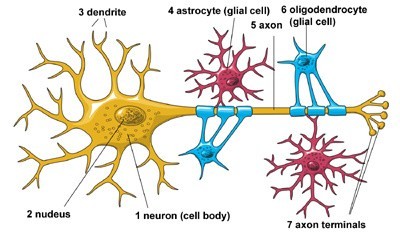
Oligodendrocyte creating mylein for a neuron in the CNS
Astrocyte giving nutrients to the same neuron
Image Provided by
http://www.biologycorner.com/anatomy/nervous/notes_ch9a.html

Schawnn Cell Providing mylein to a PNS neuron
Image Provided byhttp://usmlefasttrack.com/2013/03/schwann-cells-first-aid-usmle/

Microglial cell attaching to a neuron in the CNS
Image Provided byhttp://www.easynotecards.com/print_list/29843
I copied and pasted this information from my previous blog at wordpress (http://brainmatter123.wordpress.com/2014/10/02/glial-cells/)
#brain blogging#glial cells#astrocytes#oligodentricites#Schwann Cells#Central Nervous System#Peripheral Nervous System#CNS#PNS#mylein sheath#microglial cells#neuroscience#psychobiology
2 notes
·
View notes